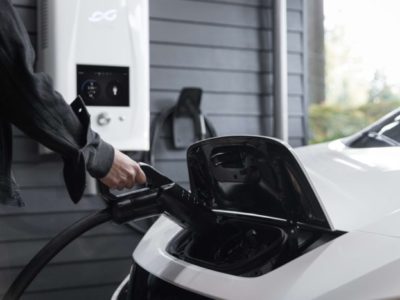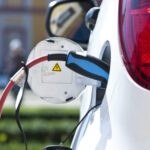Electric vehicles (EVs) are essential for reducing the impact of climate change.
Most of today’s EVs use lithium-ion batteries, although many new types of batteries are in development. EVs don’t use a single battery like a consumer electronic device. Instead, EV batteries use a pack of thousands of individual Li-ion cells working together. These batteries are rechargeable and have a high power-to-weight ratio, high energy efficiency, good high-temperature performance, and low self-discharge (energy depletion when the battery is not in use).
However, over time, the cycle of charging and depleting the battery affects the amount of charge the battery can hold, which decreases the battery’s range and requires more frequent charging. Therefore, when a vehicle battery’s performance drops to 80% or less, it is time to replace the battery. Most manufacturers offer an 8-year or 100,000-mile warranty on the batteries.
So managing the environmental impact of used EV batteries is essential.
A Second Life for EV Batteries
EV batteries that can no longer meet the performance requirements of their original purpose can be reused for a second life of 7 to 10 years in other applications. Here are some examples:
- B2U installed used EV batteries next to solar arrays in Lancaster, California, to demonstrate their capability to develop large-scale energy storage at a significantly reduced cost compared to new batteries. As a result, the company has attracted the investment of Marubeni, the Japanese trading conglomerate – a sign of confidence in the technology and its pricing.
- Nissan launched XStorage, (in partnership with Eaton, a provider of power management technology) to use second-life Leaf batteries as storage systems for homes and businesses. And they are also using 148 second-life Nissan Leaf EV batteries to store the energy from solar panels on the stadium roof to provide backup power to the Amsterdam Arena and, during periods of low demand, contribute to the power grid.
- Toyota is partnering with Jera, a joint fuel-procurement venture between Tokyo Electric Power and Chubu Electric Power, to use old batteries from EVs to power storage systems for renewable energy. Their goal is to establish a new technology that will enable storage batteries to operate more efficiently by combining different types of batteries with demonstration projects beginning in 2022.
Recycling & Refurbishing EV Batteries
However, when the battery no longer works well enough in its second life, then recycling is the best option for the environment. In the past, during the typical battery recycling process, the entire battery is dismantled, shredded, and melted down or dissolved with acid. Then the chemical elements are salvaged from the mass and go through the same manufacturing process as newly mined elements make cathodes (the terminal from which the current leaves the battery). Unfortunately, this collection-reduction-salvage process costs money, and in most cases, battery manufacturers find it cheaper to make batteries from new metals rather than recycled batteries.
But many companies are making improvements to the recycling process. Here is an example:
Ascend Elements is an example of an innovative, patented process that upcycles spent batteries so that the combination of refurbished-and-recycled batteries performs better than new ones. Ascend Elements removes the cathode and refurbishes it by adding a small number of new elements like nickel or cobalt that compose the cathode. The cathode is the most expensive component and the key to supplying the proper voltage, so they refurbish it by itself rather than shredding the entire battery. As a result, the refurbished cathode lasts longer and charges faster than other new cathodes. Then they make a battery as usual with the refurbished cathode.









The recycling process typically involves removing and salvaging valuable parts, crushing the remaining metal frame and body, and separating the metal and non-metal materials for reuse in various manufacturing applications. https://www.alldodgetruck.com/
Thanks for updating this with information on the Dodge process.